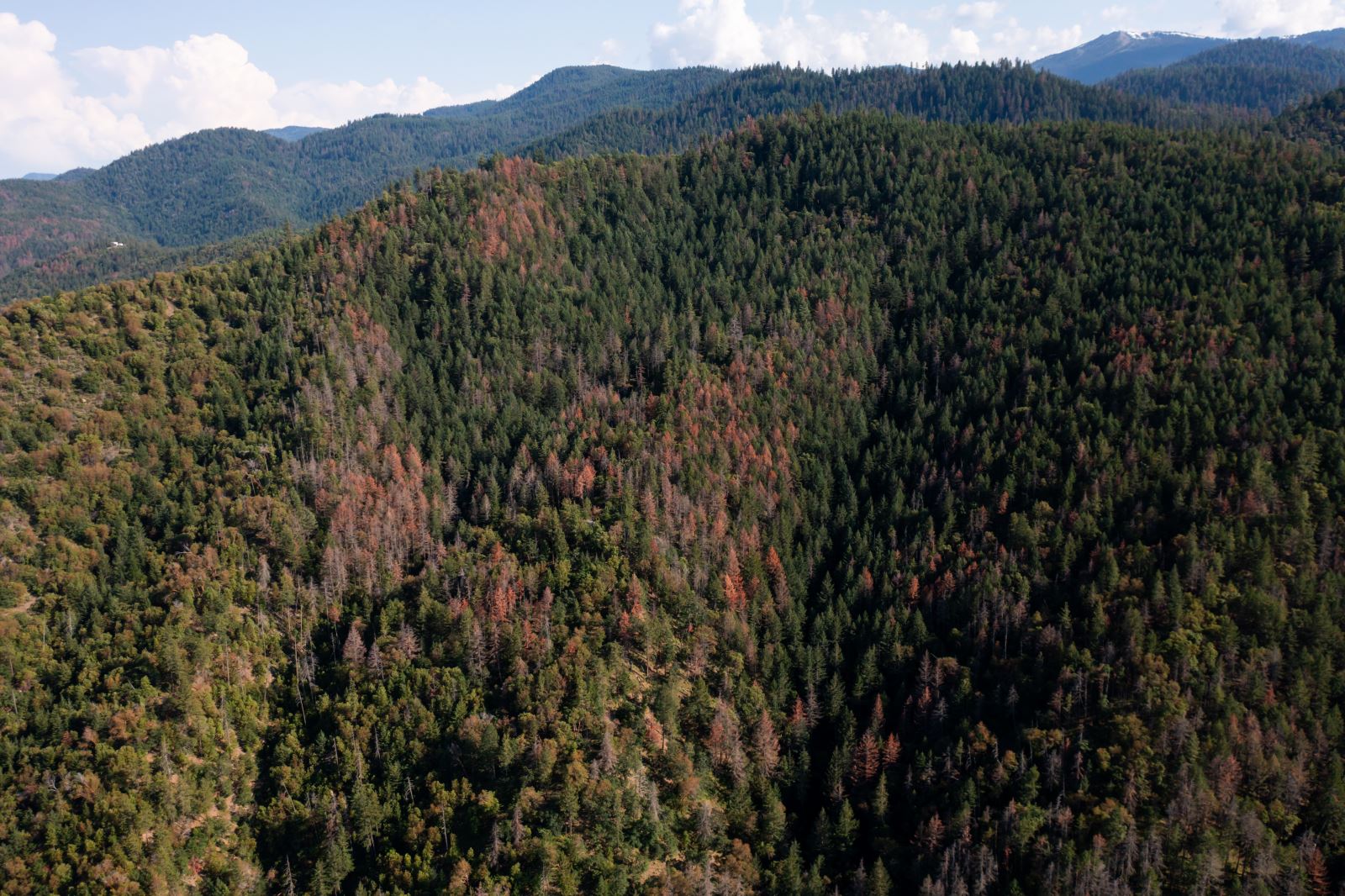
Ashland's forests have been affected by a Douglas fir die off.
courtesy of the City of Ashland
In Southern Oregon, Douglas firs are dying. And climate change is making the problem worse with more severe droughts and hotter temperatures.
About 20% of Douglas firs in Ashland’s forests are dead or dying, according to Chris Chambers, the forest officer for the city of Ashland.
“There is a lot of what we call ‘red and dead’ out there, canopies that have turned from green to red,” he said. “Ashland has always prided itself on having this emerald necklace of forests surrounding our community and that emerald necklace is changing to something a little more ruby-colored these days.”
In Southern Oregon, Douglas firs are experiencing a “decline spiral,” according to researchers at Oregon State University and the U.S. Forest Service.
“In recent years, we’ve had drought, of course, but it’s been drought accompanied by higher temperatures, particularly in the summer. And that has really stressed trees to their limits,” said Max Bennett, a retired extension forester with OSU. “And then opportunistic insects come along and take advantage of these stressed trees and kill them.”
Bennett said the Douglas fir die-off mirrors similar issues happening to other conifers throughout the Pacific Northwest. And the large tree mortality exacerbated by climate change is not confined to Ashland’s forests. Last year, the U.S. Forest Service found more than 1 million acres of dead or dying fir trees in Oregon and Washington, and dubbed the event “firmageddon.”

More than one million acres of forested land in Oregon contained dead or dying fir trees, indicated by red needles atop their canopies in this photo taken in July 2022 during an aerial survey conducted by the U.S. Forest Service.
U.S. Forest Service
Dead and dying trees can fuel wildfires that threaten a community’s watershed, homes and businesses.
Chambers said that Ashland has been using prescribed burns for more than a decade to reduce that fire risk.
“In fact, we have about a 13,000-acre footprint of work that’s been completed since 2010,” he said. “That means we would like to be visiting those acres every 10 years with prescribed fire. We’ve gotten up to about 6 or 700 acres of burning per year now.”
But, he said, the city will need to add 500 to 600 more acres of prescribed burns each year given the impact of climate change.
“There’s going to be some smoky days from our burning,” Chambers said. “But the grim truth of where we’re at right now with climate change is we have to do this work and that’s not just unique to Ashland.”
Chambers added that he hopes Oregonians can see the value in prescribed burns and that Ashland residents will learn more about how the city’s forests are affected by the tree die-off.
“We’re going to be doing a lot of outreach in the next month to two months, taking people on tours,” he said. “Those discussions you have on the ground are the most important and really help inform people.”
Chambers and Bennett spoke to “Think Out Loud” host Dave Miller about the dying trees. Listen to the full conversation:



